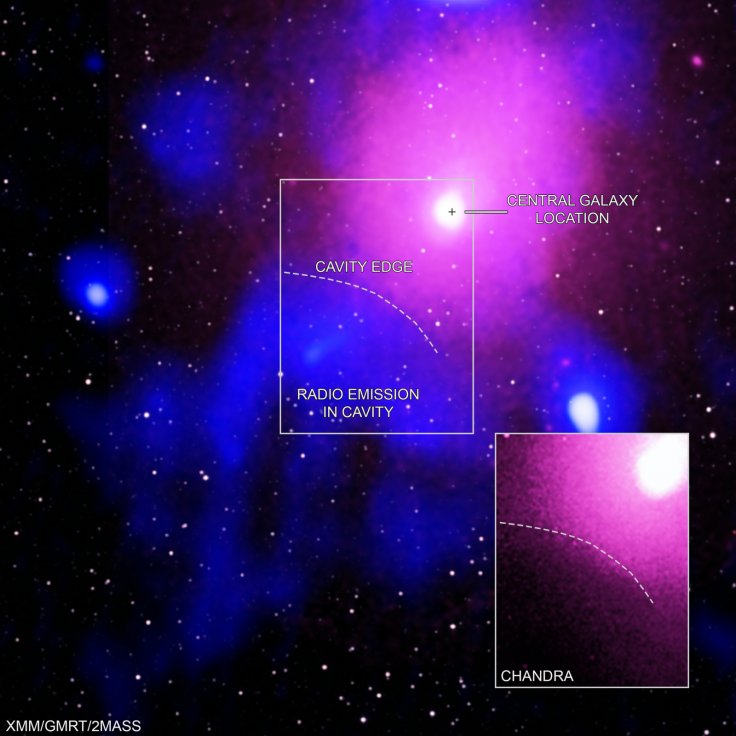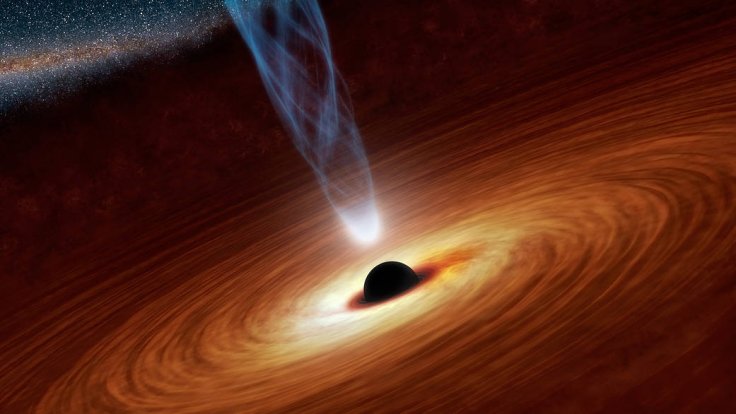Astronomers detected an unbelievable explosion in space which was bigger than the Big Bang. The scientists claimed that the colossal explosion in space was five times bigger than anything observed before.
As per the astronomers, this huge release of energy was created by a black hole which is 390 million light-years away from earth and the explosion is said to have left a giant dent in the Ophiuchus galaxy cluster. It should be noted that galaxy clusters are the largest structures in the universe held together by gravity, containing thousands of individual galaxies, as well as dark matter and hot gas.

The explosion in space
The findings were released in the Astrophysical Journal which appeared on February 27. Lead author of the study Simona Giacintucci, who is the director of research at the Naval Research Laboratory in Washington, DC said: "In some ways, this blast is similar to how the eruption of Mt. St. Helens in 1980 ripped off the top of the mountain. A key difference is that you could fit 15 Milky Way galaxies in a row into the crater (that) this eruption punched into the cluster's hot gas."
For long, astronomers thought that there was something strange about the galaxy cluster and speculated that this might be the wall of a cavity which had been formed in its gas by emissions from a central black hole.
The black hole
As per the astronomers, a supermassive black hole which is situated at the heart of the Ophiuchus galaxy, towards the cluster, is responsible for the explosion. Even though many believe that the black hole consumes all material that comes their way, it should be known that they can also blast it out -- usually in the form of jets or beams of material.
This recent explosion has broken all the previous explosion records. Scientists stated that the energy this explosion was created was five times greater than MS 0735+74, which was known as the largest and most powerful explosion.
Scientists detected this explosion using ground and space-based telescopes which include NASA's Chandra X-ray Observatory, the European Space Agency's XMM-Newton X-ray space observatory, Australia's Murchison Widefield Array and the Giant Metrewave Radio Telescope in India.

2016 hint at the explosion
In 2016, scientists found a hint which suggested astronomical activities when they observed the galaxy using Chandra observations and that revealed a possible explosion in the galactic cluster. Astronomer Norbert Werner and his colleagues noticed a probable cavity in hot gas created by the black hole. But at that time they did not think that such a blast was possible.
Werner commented in a blog post on the Chandra site: "We considered the possibility that the feature is a result of a record-breaking black hole outburst, but we discounted it as unlikely. This is one of the nearest galaxy clusters and it appeared to be too much of a coincidence to see such an outburst in our cosmic backyard."
This research was conducted by Simona Giancintucci, Naval Research Laboratory, Washington, DC, Maxim Markevitch, Goddard Space Flight Center, Greenbelt, Maryland, Melanie Johnston-Hollitt, International Centre for Radio Astronomy, Australia, Daniel Wik, University of Utah, Qian Wang, University of Utah and Tracy Clarke, Naval Research Laboratory.









